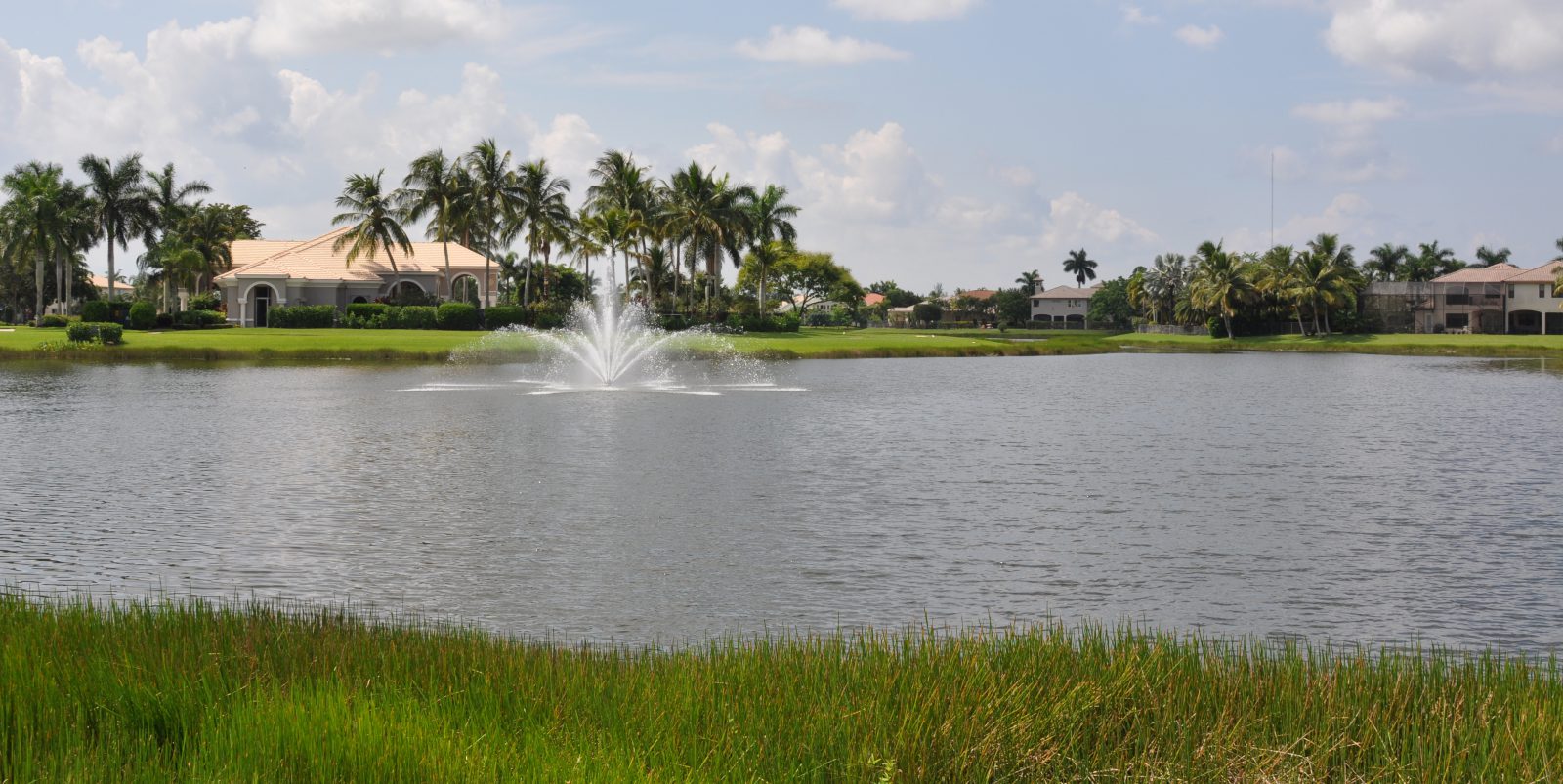
The Benefits of Submersed Aeration Systems and Floating Fountains
Lakes and ponds have many different functions; they collect sediment and runoff during rain storms, they operate as fishing spots for angling enthusiasts and they serve as beautiful ecosystems for communities to enjoy year-round. But when left unmanaged, they can develop physical and chemical imbalances that may jeopardize the lifespan of the waterbody and the wellbeing of the surrounding ecosystem.
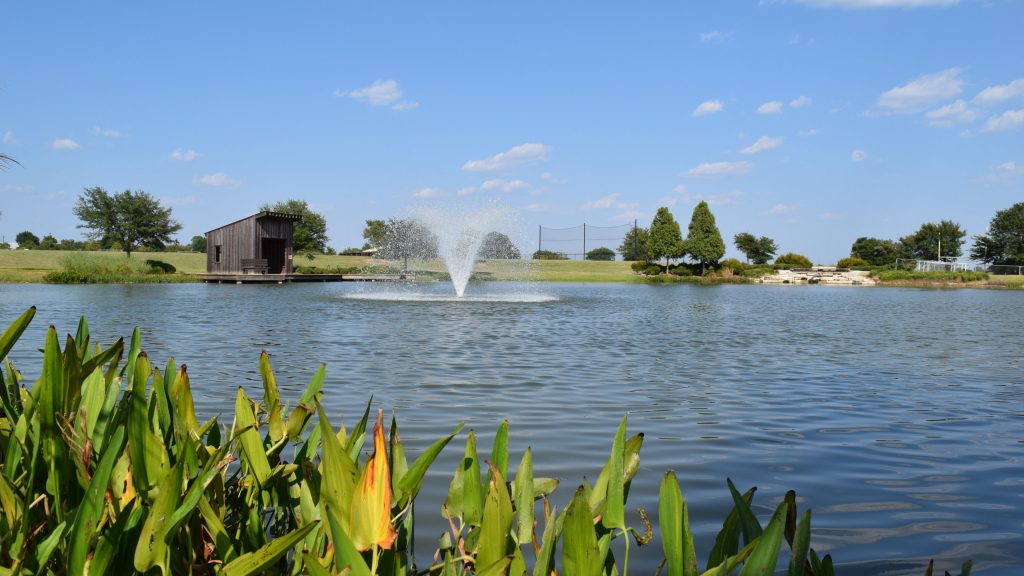
Introducing Dissolved Oxygen to Improve Lake & Pond Health
When imbalances do occur in a lake or pond, one of the initial strategies recommended by professionals to help restore balance and prevent future problems is the introduction of an aeration system. Aeration may not be the first solution that comes to mind when encountering a waterbody covered in weeds and algae, but the resulting oxygenation can make an immense difference when utilized as part of a comprehensive lake or pond management plan.
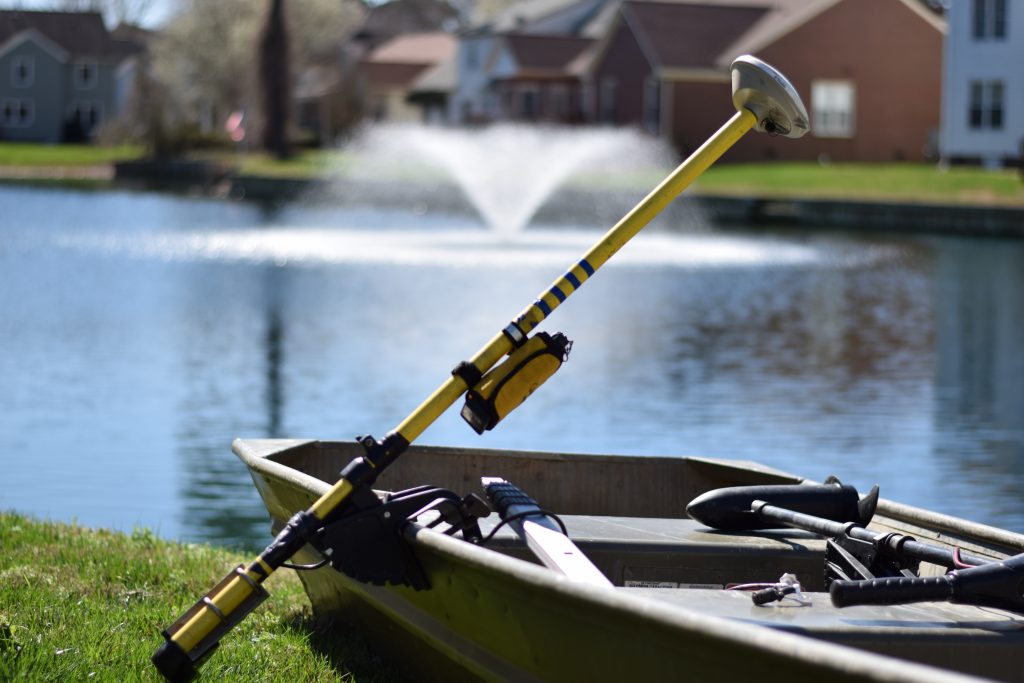
Determining Which System Fits Your Waterbody's Needs
Depending on the unique goals and characteristics of the lake or pond, two types of aeration systems may be considered: floating fountains and submersed diffused aeration. A bathymetric study can help identify the unique depths and contours of your waterbody and determine the most effective system placement.
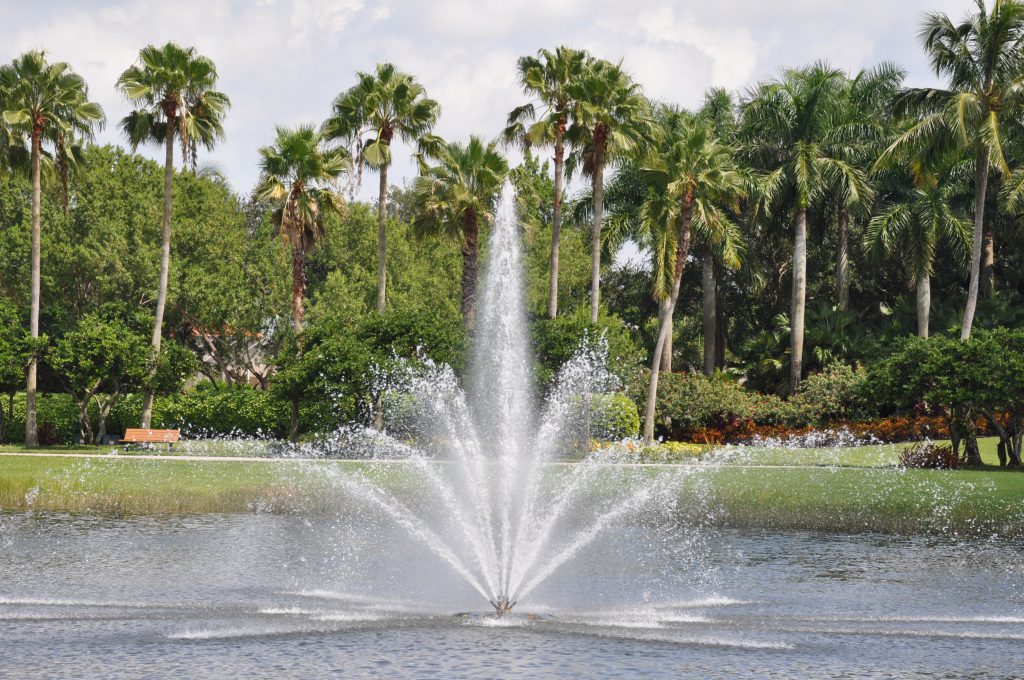
Floating Fountains
Shallow lakes and ponds can benefit from floating fountains, which encourage surface aeration by spraying water into the air in a variety of aesthetically-pleasing patterns, depending on nozzle type. Beneficial oxygenation occurs when the water splashes back down onto the pond, allowing for submerged gases to escape at the surface. Surface aeration is very effective in shallow waterbodies because all of the oxygen transfer occurs near the surface. However, it’s not as effective in lakes and ponds more than six feet deep because oxygenation cannot be achieved in greater depths near the sediment.
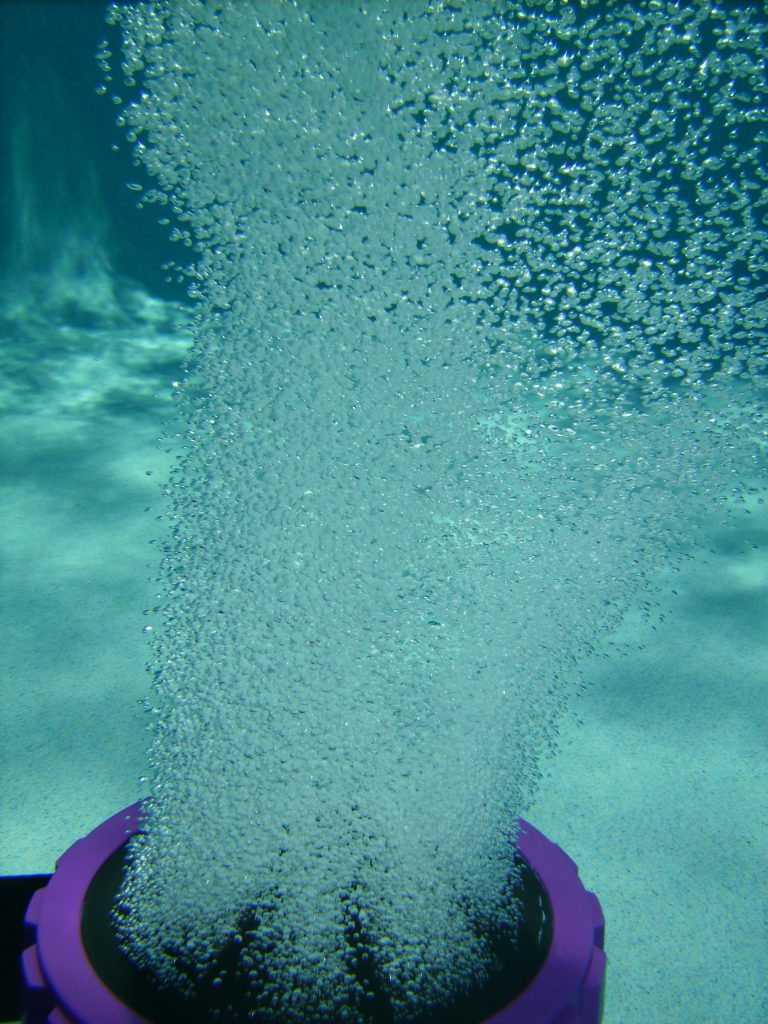
Submersed Aeration Systems
In deeper waterbodies, submersed diffused air aeration systems can help oxygenate the lower depths. Submersed aeration systems utilize a weather protected on-shore compressor to pump air through a subsurface tube to submerged bubble diffusers. As the bubbles rise, they carry the low oxygen water from the bottom towards the surface, where it mixes with the oxygen-rich surface water and atmospheric oxygen before sinking back to the bottom. The continuous vertical mixing helps to increase dissolved oxygen concentration throughout the entire waterbody.
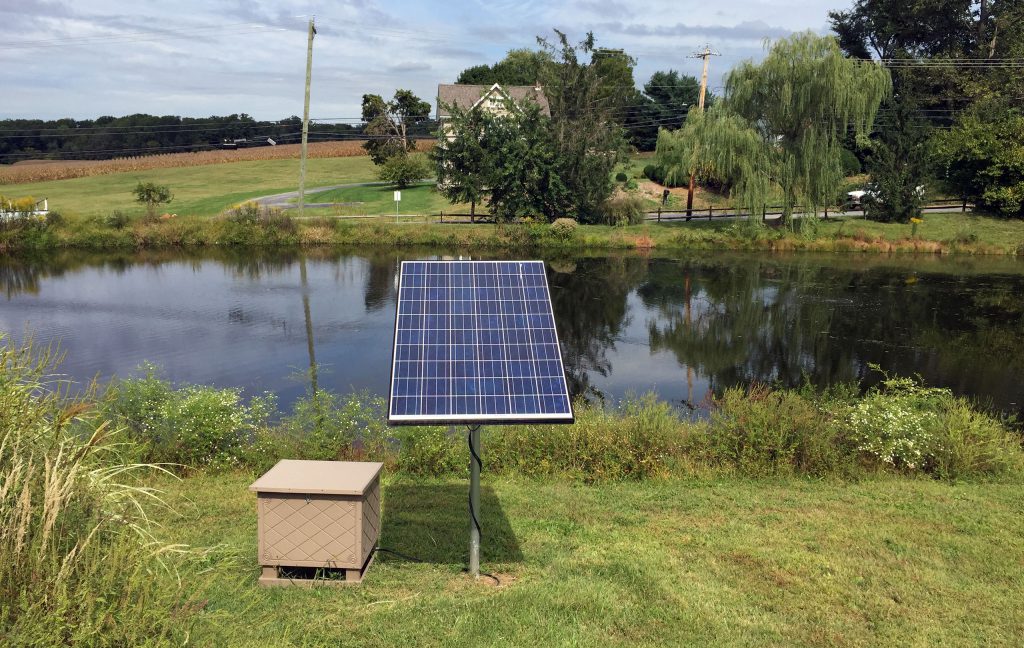
Solar Aeration Systems
No electricity? No problem. The benefits of aeration are not just limited to lakes and ponds near electrical power sources. Wind-powered and solar aeration systems facilitate the introduction of aeration to remote locations, and can also serve as an eco-friendly alternative for those interested in reducing their environmental footprint.
No matter which system you utilize, the benefits of an oxygenated lake or pond are enormous. Oxygenation can help reduce undesirable algae by facilitating the conversion of excess nutrients to forms that do not sustain algae growth. It can also help balance pH and other related water quality parameters to help improve the growth of fish, native organisms and healthy green phytoplankton – rather than cyanobacteria species, which can be toxic to humans and wildlife. Most importantly, improved oxygenation and water circulation can help reduce the accumulation of sediment at the bottom of the waterbody, which is one of the most common signs of an aging pond. As a result, the waterbody is naturally healthier and is less likely to require algaecide treatments or costly dredging.
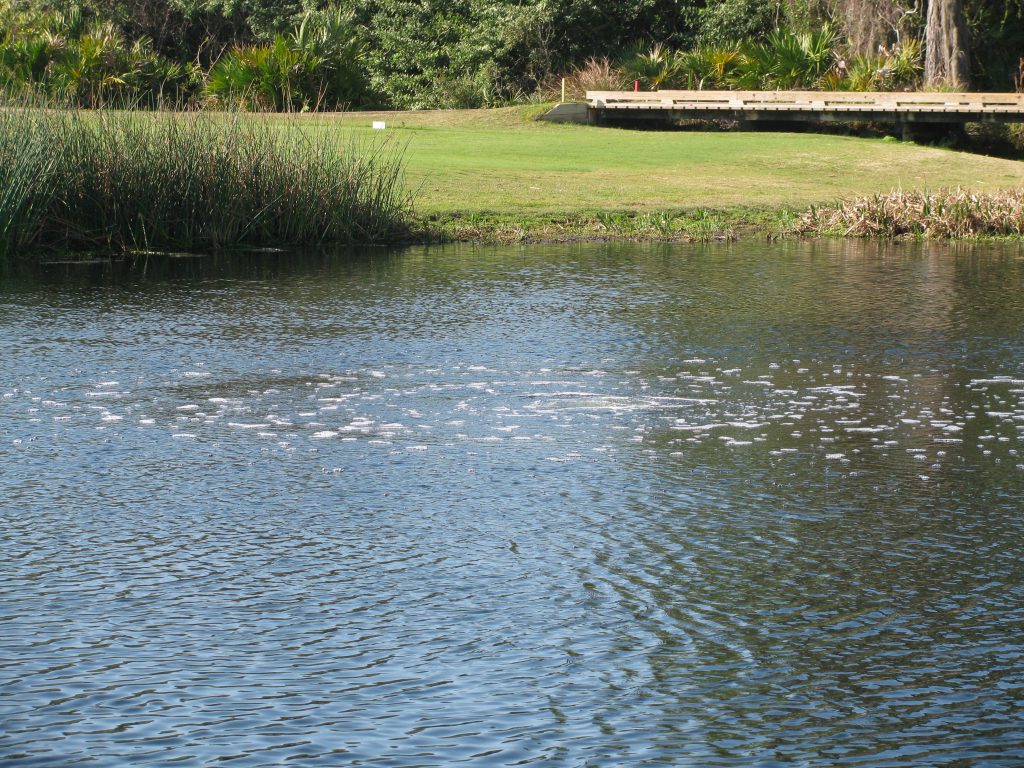
Pair Aeration with Other Proactive Solutions
Additionally, aeration can help naturally decrease mosquito activity by creating consistent water circulation. Mosquito larvae have a difficult time surviving in moving water, making it a deterrent to egg-bearing, disease-carrying mosquitoes. The waves, ripples, and overall circulation created by lake and pond aeration systems will ensure that your waterbody avoids becoming a breeding ground for mosquitoes.
Aeration is often the first solution recommended by lake and pond management professionals, but it’s never the last. The positive effects of aeration are greatly reinforced when paired with other proactive strategies, which your lake manager can recommend based on the long-term goals of your waterbody. By becoming more engaged with the complex physical and chemical traits of your lake or pond, you can help ensure its beauty and longevity for many years to come.
The Benefits of Aeration
SOLitude Lake Management is a nationwide environmental firm committed to providing sustainable solutions that improve water quality, enhance beauty, preserve natural resources and reduce our environmental footprint. SOLitude’s team of aquatic resource management professionals specializes in the development and execution of customized lake, stormwater pond, wetland and fisheries management programs that include water quality testing and restoration, nutrient remediation, algae and aquatic weed control, installation and maintenance of fountains and aeration systems, bathymetry, shoreline erosion restoration, mechanical harvesting and hydro-raking, lake vegetation studies, biological assessments, habitat evaluations, and invasive species management. Services and educational resources are available to clients nationwide, including homeowners associations, multi-family and apartment communities, golf courses, commercial developments, ranches, private landowners, reservoirs, recreational and public lakes, municipalities, drinking water authorities, parks, and state and federal agencies. SOLitude Lake Management is a proud member of the Rentokil Steritech family of companies in North America.









